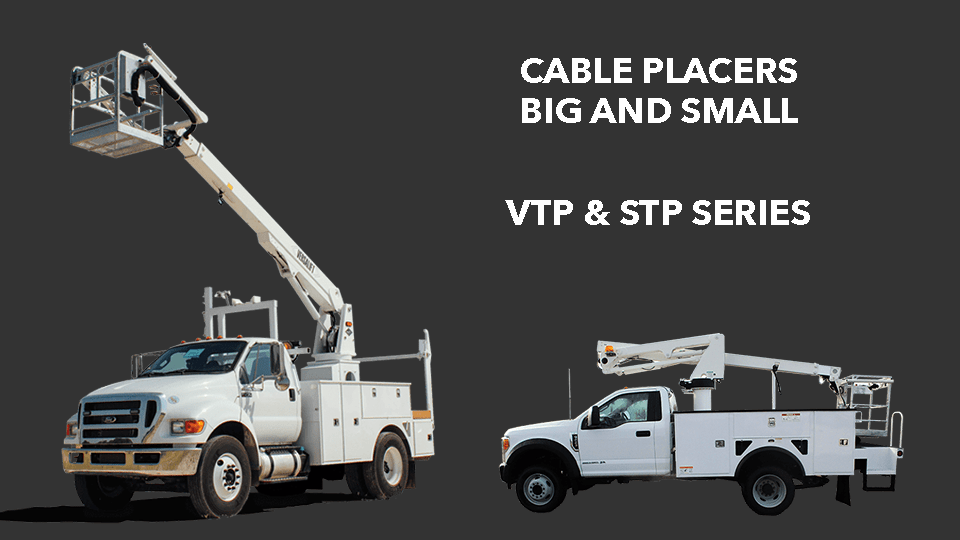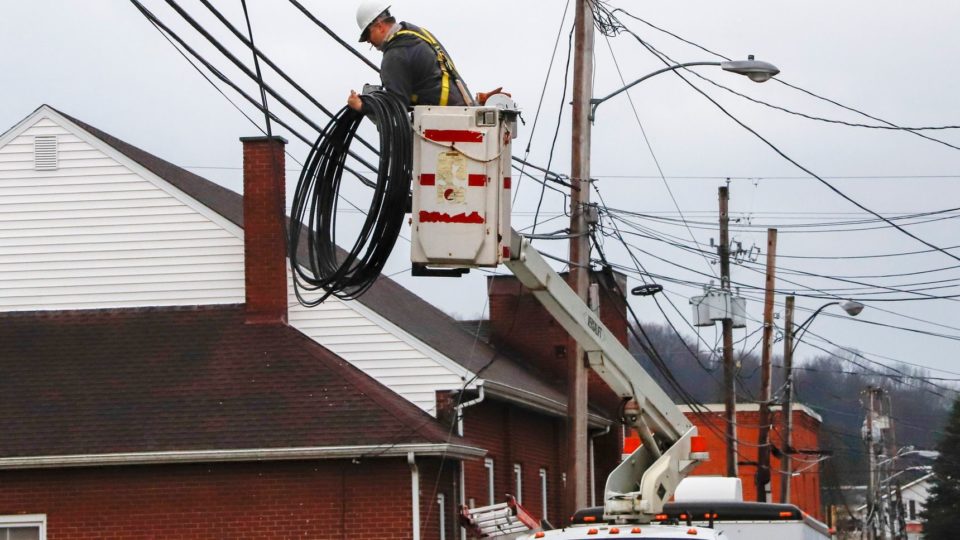Cable Placer vehicles are a specialized type of equipment that enables the efficient construction and ongoing maintenance of overhead networks of cable. Cable placer trucks can be outfitted with varying features and benefits. Normally, a light- to medium-duty unit would have a working height of forty feet. This would give it the height it needs to gain access to most data cable. Heavier duty cable placers reach fifty feet and higher. They are normally mounted on a heavier chassis. In some cases, heavier duty units will have the capacity to carry as much as 8,000 lbs of strand cable on the truck itself. In other cases, the cable placer truck would simply tow a trailer with a reel of strand cable on it.
Cable placers are a valuable addition to any fleet of maintenance vehicles. One important distinction about them is that cable placers are built to drive while a technician is in the bucket. This means that the work of actually stringing the strand line and mounting it to utility poles can be completed as efficiently as possible. Suggested speeds of these trucks (with a lineman in the bucket) range from two to three miles per hour. While this speed may seem slow, it is a useful rule that is there to assure the operator’s safety. The alternative to a slow-moving cable placer truck would be driving and parking at each utility pole, and needing to stow and unstow the aerial lift each time it needed to be moved. This is a very time consuming process that limits the usefulness of any fleet. Cable placers can expand the usefulness of a fleet of utility trucks, as they are particularly good at a specific job. Because strand cable must be restrung, and cable placers are the best tools at stringing cable, the fleets that have cable placers will stay busier than those without them. Other utility vehicles can be purposed to their most efficient use, and as a result, the fleet operates at a higher level.
Cable placers are in high demand during, and after, storm season. The currently inconsistent state of electrical grids in the United States and its protectorates proves the need for upgrading existing cable networks. Part of this task will be ongoing improvement of the networks, which, in many cases, requires the use of these trucks. There are more than 100 million miles of overhead data and electrical cable in the United States. As we continue to see, electrical and data infrastructure is fragile, and without it, people suffer. Communications and plenty of critical services, including medical services, first response and manufacturing, are off-line without access to data and communications networks.

















